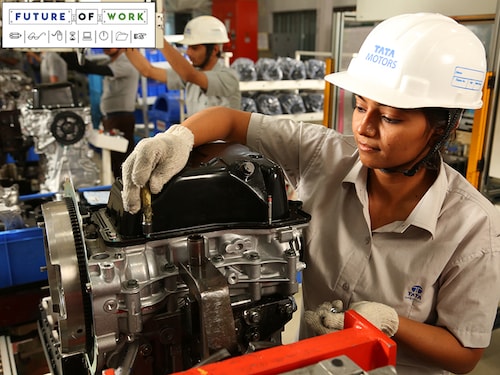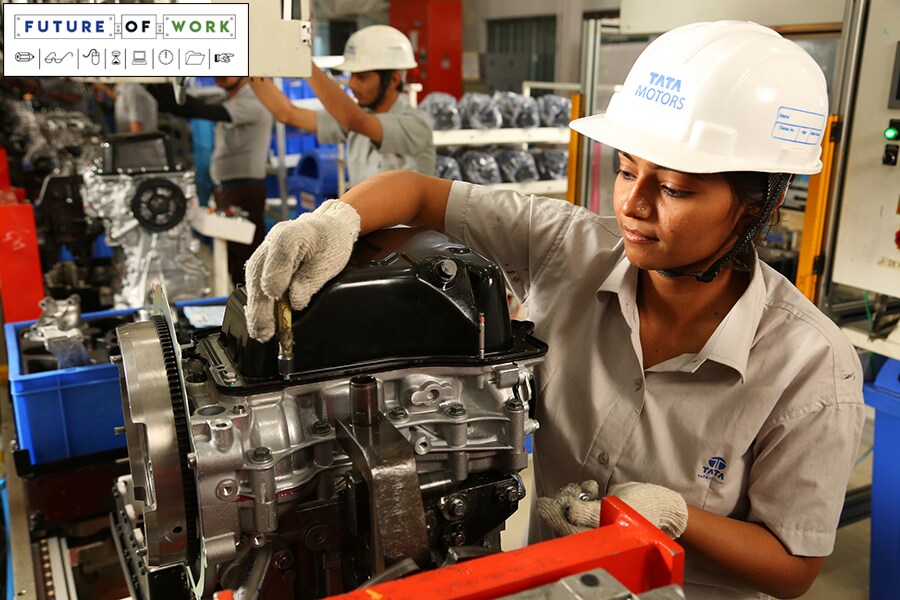Inclusion at the workplace
Technology, company policies can help enable gender parity



With automated shop floors, everything is mechanised giving women more room to work in the manufacturing sector
While digital inclusion is the way of the future, it is also imperative to have women in the technology space, without which perhaps 50 percent of the population might be left out of the benefits of technology.
“In the technology industry, where innovation is the key differentiator, encouraging and nurturing diverse perspectives help challenge the status quo. Including the perspective of the 50 percent buyer base [women] helps develop comprehensive user experience,” says Heena Raval, senior director of data sciences at CA Technologies India, who works in the machine learning and AI space.
But even as India’s share of women graduates from STEM (Science, Technology, Engineering and Mathematics) courses is far higher than in many advanced economies, women continue to be underrepresented in technology, especially in engineering roles up to the C-suite (see box). The reasons for this are varied—from the usual mindset and cultural barriers to women dropping out of their careers due to work-life imbalance, to reasons particular to technology.
“If you look at any other career, you can afford to rely on what you have learnt and you know and not necessarily have to build on it too much, but in a technical career you have to stay in touch with technology,” says Geetha Kannan, managing director of the India chapter of AnitaB.org, a global organisation that works towards recruiting, retaining, and advancing women in technology.
For this to happen though, companies sometimes need to revisit their policies. Kannan recollects an organisation that relooked at all its promotion policies and found that they stipulated that one had to be a star performer for three years before one landed a promotion.
“Because of that, people in their child-bearing years or those who were married and had children couldn’t be at their peak performances due to the balancing act between work and life. So a lot of women did not get promoted.” When they changed that to include it for a longer period, it gave them dramatic results.Technology is a great enabler for women in terms of entrepreneurship—it can help women connect with larger markets and also requires less capital. Not to mention women entrepreneurs understand the need for gender parity and hire more women, making sure their company policies reflect this. “Biases are present everywhere but at LimeRoad [an online marketplace for apparels and accessories] we actively correct the bias through our processes, be it an interview process, year-end appraisal or promotion process,” says Suchi Mukherjee, founder and CEO who among her earlier roles helped build eBay in the UK and was on the executive team of Skype where she helped design a massive upgrade.
“At LimeRoad, 30 percent of our employees are women at the middle management level, it goes up to 46 percent. To achieve this, we didn’t need an inclusion rider, we just make sure there is diversity in the group making these decisions.” With an inclusion rider, companies would be forced to fill roles with women, but instead, Mukherjee says, she makes it a mandate for recruiters to source at least 30 percent women candidates.
CA Technologies currently implements programmes to encourage women to pursue their goals, particularly in STEM (they also have a Tech Girls Rock initiative that inspires girls to explore careers in STEM fields). Companies like Tata Motors, besides empowering women to build world-class vehicles under the gender diversity initiative Tata LEAD and enabling women to have mainstream corporate second careers through Tata SCIP (Second Careers, Inspiring Possibilities), also think that automation is something that will benefit women.
“The automobile industry, which employs approximately 13 million people, engages women in different fields. Less than 5 percent of the industry workforce on the shop floor are women, but there is room for more,” says Gajendra Chandel, chief human resources officer, Tata Motors.
The biggest challenge was the misconception that women cannot work in the manufacturing sector because there is a lot of heavy lifting to do. But today’s automated shop floors mean that everything is mechanised and there are hauls and lifts that do all the heavy lifting, he adds. All that’s needed is training women to work there.
First Published: Aug 08, 2018, 18:15
Subscribe Now